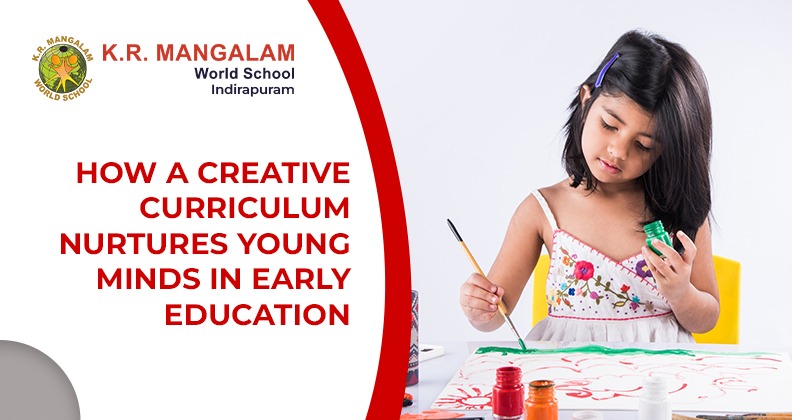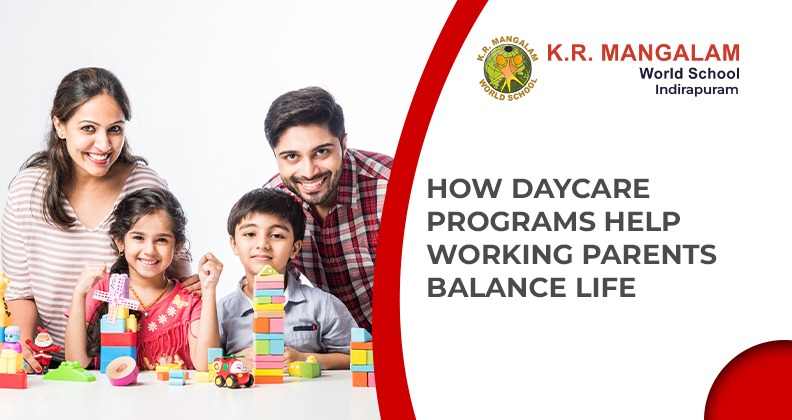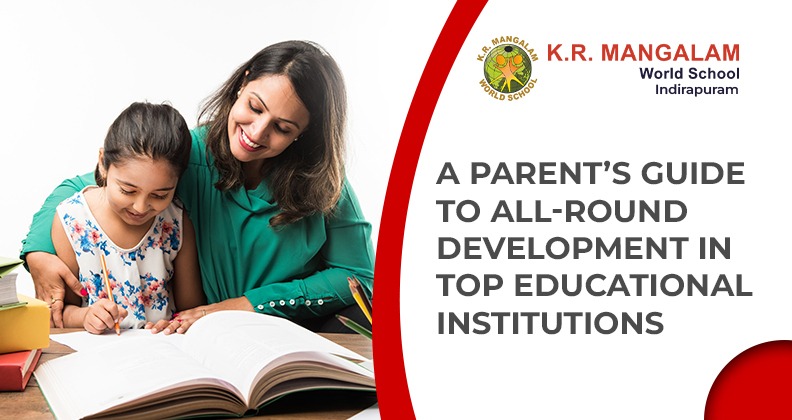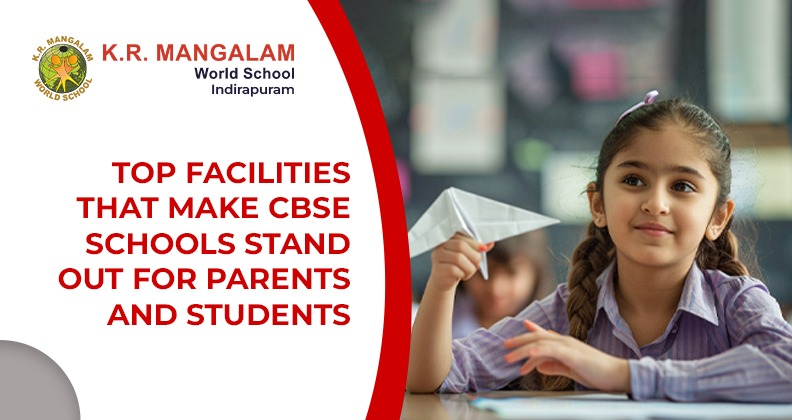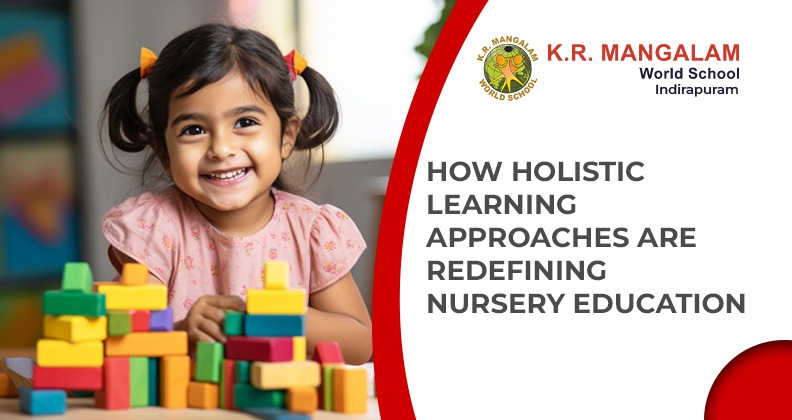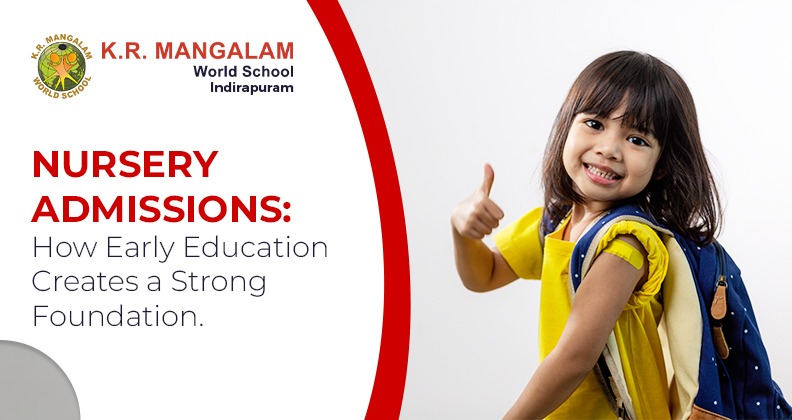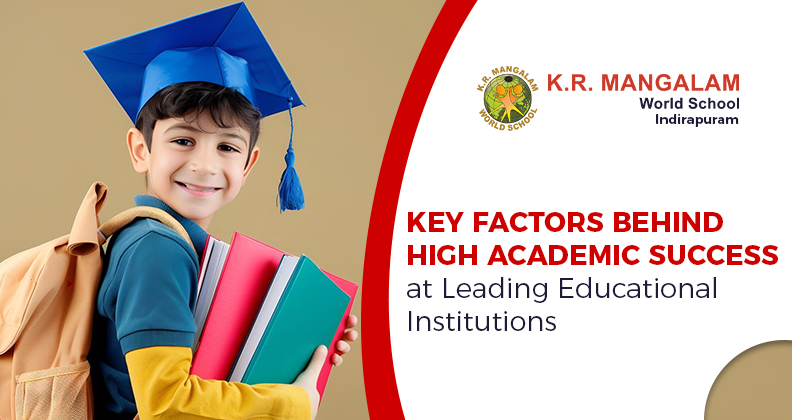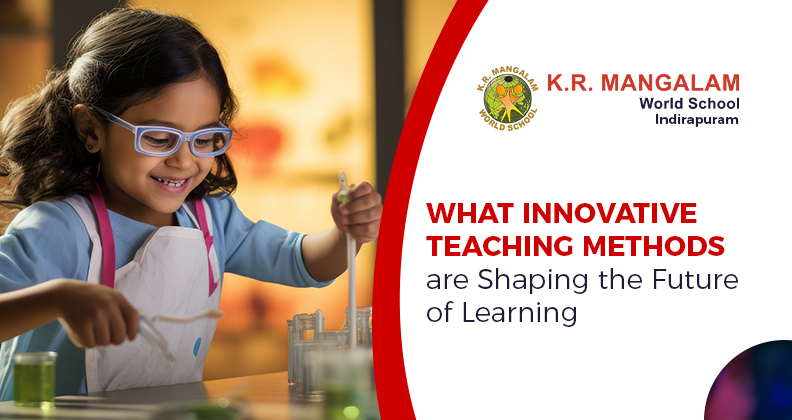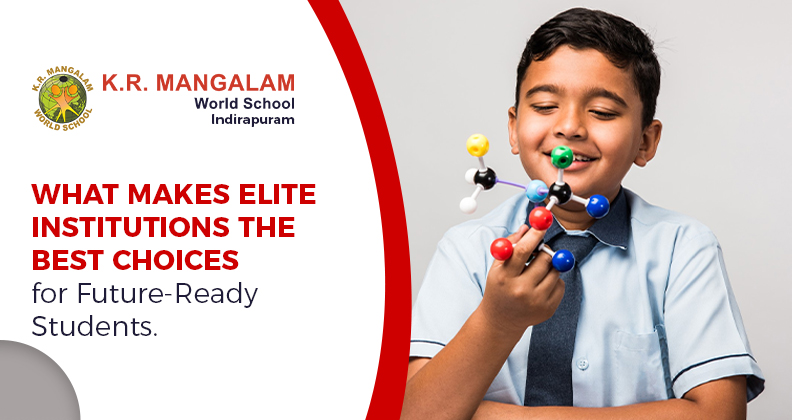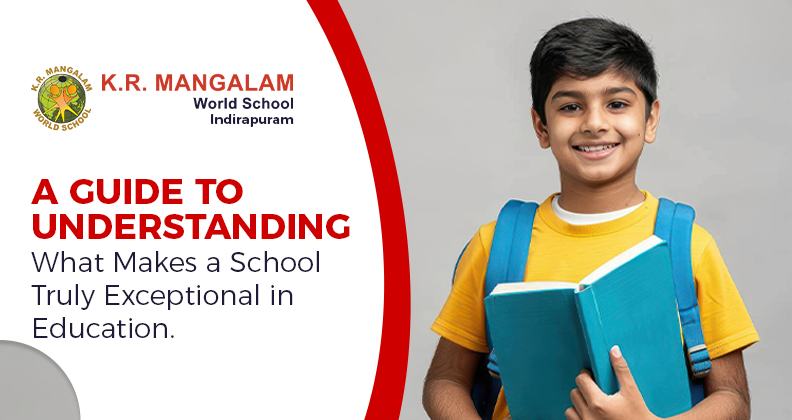Introduction:
In the formative years, children’s brains develop at an astonishing rate. At KR Mangalam Indirapuram, the Best Preschool in Indirapuram where early education plays a pivotal role in laying a foundation that will shape their future learning capabilities, social skills, and creativity. Parents seeking preschool often prioritize a creative curriculum that stimulates curiosity, imagination, and cognitive growth. But what exactly makes a curriculum “creative,” and how does it impact young learners?
This guide explores the essential aspects of a creative curriculum, its benefits in early education, and how it supports the holistic development of children.
About Us:
Early education here is playful, personalized, and purpose-driven. Young learners are invited into classrooms that champion multiple intelligences, project-based learning, and creative expression embedded in STEAM activities. Whether building mini-robots, experimenting in skill studios, or exploring through art, music, and storytelling workshops—each moment is a discovery. Our co-curricular offerings include child-friendly drama, creative dance, and imaginative craft zones that help children explore self-expression and communication. Through events like the “Expressions Enhanced” art showcase and themed story-telling mornings, families witness how children blossom through creativity. We also offer carefully curated orientation sessions, open-house creative corners, and parent workshops to strengthen the home–school bond. This pathway ensures children build a lifelong curiosity and creative confidence right from the foundational years.
-
Understanding a Creative Curriculum in Early Childhood Education
A creative curriculum is a dynamic approach designed to nurture the innate curiosity of young learners. It moves away from rote memorization and focuses on exploration, discovery, and experiential learning. Its key components include:
- Play-Based Learning: Activities that integrate fun with fundamental learning.
- Hands-On Exploration: Encouraging children to experiment and discover concepts.
- Integration of Arts and Crafts: Using creativity to strengthen motor and cognitive skills.
- Project-Based Approach: Fostering collaboration and problem-solving skills.
By combining structured lessons with creative activities, this curriculum ensures that children develop a love for learning rather than viewing education as a chore.
-
Why Creativity Matters in Early Education
Creativity isn’t just about painting or crafting; it’s about developing the ability to think differently, solve problems, and adapt to new challenges. Early childhood is the most critical period for nurturing creativity because:
- Neural Pathways Are Forming: Creative activities strengthen connections in the brain.
- Boosts Cognitive Flexibility: Helps children adapt to varied situations and think outside the box.
- Enhances Communication Skills: Creative storytelling, drama, and role-play improve vocabulary and expression.
- Encourages Emotional Expression: Art, music, and movement help children express feelings they may not yet have words for.
-
Core Elements of a Creative Curriculum
a) Interactive Learning
A key component of a creative curriculum is interactivity. Instead of passively absorbing information, children engage in:
- Group discussions and storytelling sessions.
- Collaborative projects that foster teamwork.
- Question-and-answer sessions that encourage curiosity.
b) Sensory-Rich Environment
Young children learn best when multiple senses are engaged. Classrooms often include:
- Textured materials for tactile exploration.
- Music and rhythm to develop auditory skills.
- Bright, engaging visuals that stimulate visual memory.
c) Integrated Subjects
Subjects like math, language, science, and art are interconnected rather than taught in isolation. For example, a lesson on plants might involve counting leaves (math), drawing flowers (art), and narrating stories about nature (language).
-
How a Creative Curriculum Shapes Cognitive Growth
A child’s ability to process information, think critically, and solve problems is rooted in cognitive development. A creative curriculum supports this by:
- Encouraging cause-and-effect experiments, like observing plant growth or mixing colors.
- Introducing basic reasoning skills through puzzles and building blocks.
- Allowing freedom to ask questions and seek their own answers.
This interactive model strengthens early neural development and builds a foundation for complex learning later on.
-
Role of Play in Creative Learning
Play is often referred to as “the work of childhood.” Within a creative curriculum, play is purposeful and structured to teach life skills:
- Role Play & Dramatic Play: Enhances imagination and empathy.
- Outdoor Play: Builds physical strength and social interaction skills.
- Constructive Play: Activities like block building develop spatial awareness and problem-solving.
Through play, children learn decision-making, cooperation, and resilience.
-
Emotional and Social Development Through Creativity
Early childhood education is not just about alphabets and numbers; it’s also about emotional and social readiness. Creative programs help children:
- Express Emotions Safely: Using art, music, or storytelling as an outlet.
- Build Relationships: Through group projects and cooperative games.
- Develop Self-Confidence: Achieving small creative milestones builds self-esteem.
A nurturing environment ensures that children enter primary education emotionally resilient and socially aware.
-
Importance of Teachers in a Creative Curriculum
Educators are the architects of early learning experiences. Their role in a creative curriculum includes:
- Guiding Rather Than Dictating: Allowing children to explore their own ideas.
- Observing and Assessing Progress: Using observation-based tools to track growth.
- Fostering Curiosity: Asking open-ended questions that prompt deeper thinking.
Teachers trained in creative methodologies are essential for maximizing the benefits of this approach.
-
Involvement of Parents in Creative Learning
Parents are partners in the journey of holistic education. They can support creative learning by:
- Encouraging imaginative play at home.
- Providing opportunities for outdoor exploration.
- Reading together and discussing stories creatively.
- Praising effort rather than just results, fostering a growth mindset.
This collaboration between home and school ensures continuity in a child’s development.
-
How a Creative Curriculum Prepares Children for Future Education
The skills developed during early education act as stepping stones for later stages. Creative curricula prepare children by:
- Developing early literacy and numeracy in engaging ways.
- Enhancing problem-solving abilities crucial for primary and secondary education.
- Instilling a lifelong love of learning that goes beyond textbooks.
Children who experience creativity-driven education often transition into higher grades with confidence and curiosity.
-
Incorporating Technology in Creative Learning
Today’s preschools blend technology with creativity responsibly:
- Interactive Whiteboards: Make lessons visually stimulating.
- Educational Apps: Encourage self-paced exploration.
- Digital Art Tools: Allow children to create while developing tech skills.
Technology complements traditional methods, making learning both modern and meaningful.
-
Safety and Environment in a Creative Curriculum
A creative curriculum thrives in an environment where children feel safe and valued. Key features include:
- Child-friendly classrooms with safe materials.
- Well-supervised activity areas.
- Policies ensure emotional and physical safety.
Such spaces help children take creative risks without fear of failure.
-
Success Stories of Creative Early Education
Around the world, early learners from creative programs have shown:
- Advanced problem-solving skills.
- Stronger social and communication abilities.
- Better adaptability in primary school transitions.
These outcomes highlight the importance of such programs in shaping tomorrow’s leaders and innovators.
-
Choosing the Right Preschool for a Creative Start
For parents searching for the ideal preschool, here’s what to consider:
- Curriculum Design: Does it integrate play, exploration, and academics?
- Teacher Qualifications: Are educators trained in early childhood pedagogy?
- Infrastructure: Are there creative zones like art corners, music rooms, and activity centers?
- Parental Involvement: Does the school involve parents in the learning journey?
A well-chosen preschool sets the stage for a child’s holistic development.
-
Overcoming Challenges in Creative Early Education
While a creative curriculum offers immense benefits, there can be challenges:
- Misconceptions About Academic Rigor: Some parents may fear less emphasis on traditional subjects.
- Resource Requirements: Creative learning often demands well-equipped spaces.
- Teacher Training: Not all educators are skilled in this approach.
Progressive institutions address these challenges through regular teacher training, balanced curricula, and transparent communication with parents.
-
The Future of Creative Early Childhood Education
Looking ahead, early education will continue evolving with trends such as:
- STEAM Integration (Science, Technology, Engineering, Arts, Mathematics)
- Mindfulness and Emotional Intelligence Training
- Sustainability and Nature-Based Learning
- Greater Personalization Through AI and Analytics
Parents who opt for forward-thinking programs ensure their children remain adaptable and innovative in the years to come.
Conclusion:
A preschool that emphasizes a creative curriculum offers far more than early literacy or numeracy—it builds curious, confident, and capable young learners. At KR Mangalam Indirapuram, the Top Preschool in Indirapuram where by integrating play, exploration, arts, and academics, this approach lays a solid foundation for future learning while nurturing a child’s individuality.
For parents, the goal is to find an environment where creativity is celebrated as much as academic progress. After all, in a rapidly evolving world, creativity is not just an advantage—it is a necessity.
FAQs:
Q. 1: What is a creative curriculum?
Ans : A creative curriculum uses play, exploration, and project-based activities to foster curiosity, imagination, and critical thinking in young learners.
Q. 2: How does creativity improve early learning?
Ans : Creative methods help children understand concepts through storytelling, art, music, and hands-on activities, making learning enjoyable and memorable.
Q. 3: Are creative curriculums aligned with academic goals?
Ans : Yes, they meet learning standards while adding interactive methods that develop language, numeracy, and social skills.
Q. 4: Do teachers receive special training for creative teaching?
Ans : Leading schools train teachers in child psychology, creative pedagogy, and innovative teaching methods to guide young learners effectively.
Q. 5: How can parents support a creative curriculum at home?
Ans : Parents can read stories, encourage drawing, and provide open-ended play materials to reinforce classroom learning.
Q. 6: Does a creative approach delay formal academic learning?
Ans : No, it enhances readiness by building foundational skills through enjoyable and meaningful activities.


